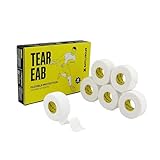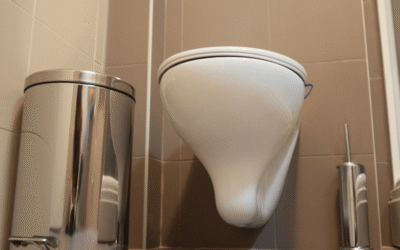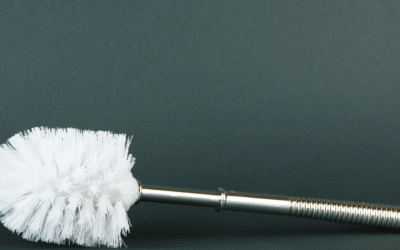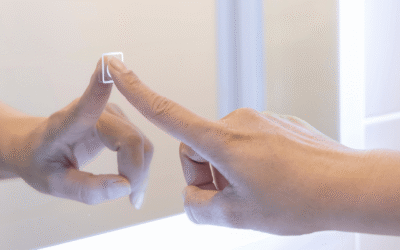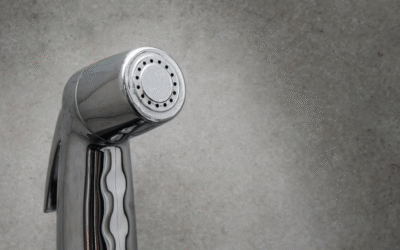Cricket, a beloved sport with a rich history, demands more than just skill and strategy; it requires a comprehensive array of equipment. Whether they’re a novice stepping onto the pitch for the first time or a seasoned player honing their craft, having the right gear can significantly impact performance and safety. With the market flooded with options, knowing what essentials to include in a cricket kit can be daunting.
A well-equipped cricket kit is the backbone of any successful game. From the bat, the cricketer’s most crucial tool, to protective gear like gloves and pads, each item plays an integral role in ensuring players perform at their best. Understanding the nuances of selecting the right equipment, such as choosing a bat that matches one’s playing style, can make all the difference. This article delves into the top ten must-have items every cricketer should consider, helping players gear up for success.
Top Amazon Sellers
Key Takeaways
- A comprehensive cricket equipment kit is essential for performance and safety, including items such as bats, balls, and protective gear.
- The cricket bat is crucial, with selection based on factors like material, weight, and design to match individual playing styles.
- Protective gear, such as helmets, pads, and gloves, is vital for player safety against high-speed balls and potential injuries.
- Appropriate clothing and footwear enhance comfort and agility, with specific designs tailored for cricket’s physical demands.
- Training equipment, like practice nets and pitch markers, plays a significant role in refining skills and preparing for matches.
- Additional equipment items, such as abdominal guards and taping, further enhance player safety and support during play.
Essential Cricket Equipment
A comprehensive cricket equipment list ensures players stay safe while performing at their best. Essential items include a cricket bat, ball, and helmet for protection and performance.
Cricket Bat
The cricket bat is perhaps the most vital component in a player’s kit. Crafted from English or Kashmir willow, bats vary in weight and design to suit different playing styles. Players consider factors like sweet spot and balance to find the perfect match for their game.
Cricket Ball
| # | Preview | Product | Price | |
|---|---|---|---|---|
| 1 |

|
Kookaburra County Club, 4.75oz Cricket Ball, Red, Youths |
£16.99
£14.44 |
Buy on Amazon |
| 2 |

|
5RIDGE Cricket Balls for Training, Coaching, Practice & Excellent Bounce Skills… |
£6.75
£5.99 |
Buy on Amazon |
| 3 |

|
Mozi Sports® Leather Cricket Ball Senior Hand Stitched Match Quality Balls… |
£10.99
£9.34 |
Buy on Amazon |
| 4 |

|
Kookaburra County Club Cricket Ball 5.5oz, Red, Mens |
£16.99
£14.44 |
Buy on Amazon |
| 5 |

|
Readers Team Cricket Ball, Orange, 2.5oz, 1B2512Y06 |
£3.99 |
Buy on Amazon |
Cricket balls, typically made from cork and covered in leather, play a crucial role in matches. Weighing between 155.9g and 163g, they come in red or white, with pink used in specific formats. The ball’s quality affects the game’s dynamics, making selection essential.
Cricket Helmet
Safety on the field starts with a reliable cricket helmet. Helmets protect players from high-speed balls, reducing injury risks. Key features include a rigid outer shell, adjustable straps, and ventilation to ensure comfort and safety during long matches.
Protective Gear
Protective gear is crucial in cricket for player safety. Essential items ensure players stay protected from high-speed balls and potential injuries.
Pads and Guards
Batsmen and wicketkeepers wear leg pads to shield their shins. Thigh guards protect the upper legs, while chest and arm guards provide additional coverage. Abdominal guards, often called boxes, safeguard sensitive areas.
Gloves
Cricket gloves are vital components of the cricket equipment list, offering protection for hands during gameplay.
Batting Gloves
Batting gloves, essential for batsmen, provide finger and wrist protection to absorb ball impact. These gloves feature thick padding across all five fingers to cushion strikes. Made of durable materials, they enhance grip and enable better control during swings and catches, contributing to safer, more effective batting.
Wicket-keeping Gloves
Wicket-keeping gloves protect the hands and enhance catching abilities for wicketkeepers. These gloves include webbing between the thumb and index finger, reducing impact and improving ball handling. Padded for extra protection, they offer flexibility and a firm grip, making them indispensable for this crucial role in cricket.
Clothing and Attire
Appropriate attire plays a critical role in cricket, facilitating player comfort and performance. The right clothing helps maintain focus and agility on the field.
Shirts and Trousers
Shirts in cricket should be lightweight and breathable, usually made of nylon or polyester, promoting airflow and comfort. Long-sleeved or short-sleeved options are available depending on personal preference and weather conditions. Trousers need to be loose-fitting to ensure ease of movement; elastic waistbands are common for added flexibility.
Footwear
| # | Preview | Product | Price | |
|---|---|---|---|---|
| 1 |

|
Gunn & Moore GM Rubber Cricket Shoes | Aion All Rounder | Breathable Lightweight… |
£49.95 |
Buy on Amazon |
| 2 |

|
Kookaburra KC 2.0 Rubber Sole Cricket Shoe – Yellow/Green – 7 |
£59.95 |
Buy on Amazon |
| 3 |

|
Kookaburra KC 3.0 Rubber Sole Cricket Shoe – Gold/Black – 10 |
£49.99
£41.92 |
Buy on Amazon |
| 4 |

|
Gunn & Moore Unisex Aion Cricket Shoe, White Fluro Yellow Blue, 9.5 UK | £56.71 £50.00 | Buy on Amazon |
| 5 |

|
Kookaburra KC 3.0 Spike Cricket Shoe – Gold/Black – 10 |
£59.99
£45.66 |
Buy on Amazon |
Cricket footwear is essential for optimal grip and support on different surfaces. Shoes typically feature rubber or metal spikes, which provide stability during swift running or sudden turns. Selection depends on the type of pitch; firm surfaces may require rubber spikes, while metal spikes are suitable for grassy terrains. Proper cushioning in the shoe enhances comfort during extended play periods.
Training Equipment
Training equipment enhances a cricketer’s skills and boosts performance. Effective use of these tools can refine techniques and prepare players for match scenarios.
Practice Nets
Practice nets, a crucial component of cricket training, allow players to refine their batting and bowling techniques safely. They provide a controlled environment, enabling cricketers to focus on improving skills without worrying about retrieving balls. Ensuring the nets are well-maintained is essential for ongoing effective training.
Pitch Markers
Pitch markers aid in practice sessions by helping players understand pitch conditions and adjust techniques accordingly. These tools define various zones on the pitch, which assists bowlers in achieving consistent line and length. Accurate placement of pitch markers can significantly enhance training efficiency.
Cricket Ground Equipment
Cricket ground equipment plays a crucial role in matches and training sessions, influencing safety and performance.
Stumps and Bails
Stumps and bails form an integral part of the cricket equipment list. These components frame the wicket, signalling crucial events like bowled or run-out. Made of wood, stumps and bails are designed to withstand repeated use yet need ongoing maintenance to ensure ideal performance.
Boundary Flags
Boundary flags mark the extent of the playing area, crucial for scoring and fielding decisions. Positioned evenly, they provide clear visual indicators for players and officials alike. Regular checks ensure flags stand firmly, maintaining their function throughout matches and training sessions.
Additional Equipment
While essential gear forms the core of a cricket equipment list, certain additional items enhance safety and performance.
Abdominal Guard
Batters often use an abdominal guard to protect the groin area from fast deliveries. Constructed from high-density plastic with padded edges, it secures via a jock strap, ensuring maximum protection against impacts during play.
Taping and Strapping
Cricketers utilise taping and strapping to prevent injuries and support healing areas. These techniques offer essential support to joints and muscles, enabling players to maintain performance levels while reducing the risk of exacerbating existing injuries.
Conclusion and Top Picks
Selecting the right cricket equipment is paramount for both performance and safety on the field. From bats tailored to individual playing styles to protective gear that guards against high-speed balls, every piece plays a vital role in a cricketer’s kit. Understanding the nuances of each item, such as the materials and design features, can significantly impact a player’s game. Additionally, the importance of suitable clothing and footwear cannot be overstated, as they contribute to comfort and agility during matches. By investing in quality equipment and understanding its purpose, players can enhance their skills and enjoy the game to its fullest.
Frequently Asked Questions
What are essential items to include in a cricket kit?
A cricket kit should ideally include a bat, ball, batting gloves, helmet, and protective gear like thigh guards, leg pads, and an abdominal guard (box). Proper cricket footwear and clothing, such as breathable shirts and loose trousers, are also crucial. These essentials ensure safety and performance, catering to varied playing styles and conditions.
Why is a cricket helmet important?
A cricket helmet is essential for player safety, protecting against fast and potentially dangerous deliveries. It features a hard outer shell and a face grille, providing comprehensive protection for the head while maintaining comfort during play. Its importance cannot be overstated, as it acts as a primary defence against serious injuries, ensuring players can focus on their performance.
What protective gear is crucial for cricketers?
Crucial protective gear for cricketers includes leg pads, thigh guards, chest and arm guards, and an abdominal guard. These items shield players from high-speed balls, reducing the risk of injuries during matches. Each piece is designed to protect specific body parts, ensuring comprehensive safety and allowing players to concentrate fully on their game.
How does a cricket bat affect a player’s performance?
The cricket bat is vital for a player’s performance, with its weight and design influencing batting style and efficacy. A well-suited bat enhances stroke play, balancing power and control. Selecting a bat that complements one’s playing technique is key to maximising performance on the field, catering to individual preferences for grip and handling.
Why is appropriate clothing and footwear important in cricket?
Appropriate clothing and footwear enhance comfort and performance in cricket. Breathable shirts and loose-fitting trousers ensure freedom of movement, while proper footwear provides grip and support on varying pitch surfaces. The choice between rubber and metal spikes depends on pitch type, aiding in stability and reducing injury risk during play.
What role does training equipment play in cricket?
Training equipment, such as practice nets and pitch markers, is crucial for honing skills and improving performance. Nets enable players to practice batting and bowling safely, while pitch markers provide insights into conditions, helping refine techniques. These tools make training sessions more effective, giving players a competitive edge.
What are stumps and bails used for in cricket?
Stumps and bails are integral components of the wicket, marking key events like bowled or run-out when displaced. Stumps are three vertical wooden poles, and bails are crosspieces that rest atop them. Their maintenance is essential for match integrity, as they define the game’s structure and are crucial during play.
How does an abdominal guard protect cricketers?
An abdominal guard, or box, protects cricketers from fast deliveries targeting the groin area. Made from high-density plastic, often with padded edges, it absorbs impact, minimising injury risk. Worn during batting and wicketkeeping, it ensures essential protection, allowing players to focus on their game without fear of serious injuries.

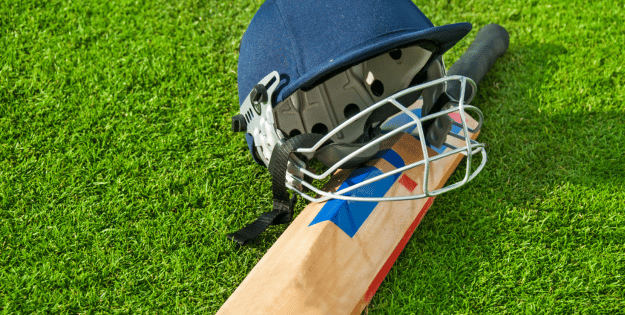

















![FORTRESS Lower Body Guard - Thigh Pads for Cricket [2 Sizes] (Senior,...](https://m.media-amazon.com/images/I/31o38WLqN5L._SL160_.jpg)








































